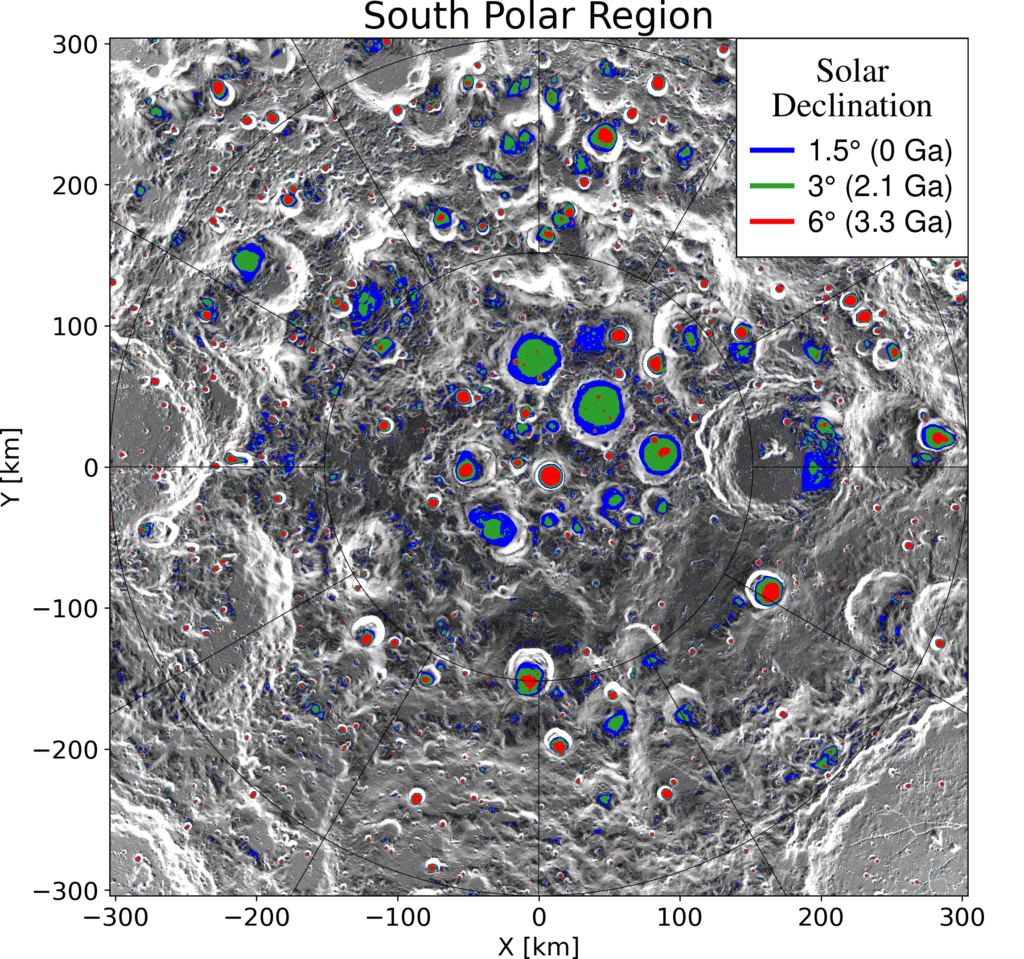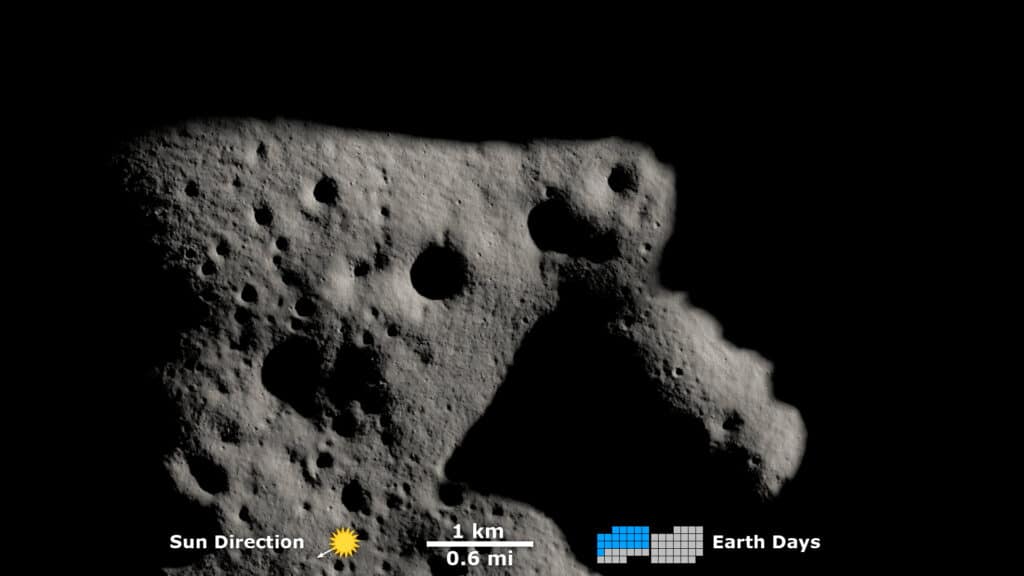Scientists have recalibrated how much water ice we can expect to find on the Moon, and the new numbers could affect future space missions. A recent study led by Southwest Research Institute’s Dr. Raluca Rufu indicates that current estimates for water ice reserves on the Moon are likely too high.
The study finds that most of the Moon’s “permanently shadowed regions,” or PSRs, which are believed to contain water ice, are much younger than previously thought—around 3.4 billion years old.
What Are PSRs and Why Are They Important?
PSRs are pockets on the Moon’s poles where the Sun never shines due to the unique angle of the Moon’s tilt and its orbit around Earth. These shadowy areas are incredibly cold, making them perfect places for trapping volatile substances like water ice.
In a place as inhospitable as the Moon, finding water is a big deal. Water can be broken down into hydrogen and oxygen to create air and rocket fuel, making the Moon a potential pit stop for deeper space exploration.
“We think the Earth-Moon system formed following a giant impact between early Earth and another protoplanet,” Dr. Rufu explains in a statement. She added that the Moon has moved away from Earth over time, and around 4.1 billion years ago, its tilt angle changed dramatically. This led to the formation of the PSRs we see today.
The research team used a newly developed tool called AstroGeo22 to simulate the evolution of the Earth-Moon relationship. They also used data from the Lunar Orbital Altimeter Laser, which measures surface heights on the Moon, to track how these permanently shadowed areas have evolved over time.

Past Efforts to Find Moon Water
In 2009, NASA crashed a two-ton rocket body into a Moon crater to check for water. The explosion was monitored by a satellite and other Earth-orbiting technology, including the Hubble Space Telescope. “Our work suggests that Cabeus crater became a PSR less than a billion years ago,” said Norbert Schörghofer, the lead author of the study. This means that water-ice trapping in the Moon’s poles is a relatively recent phenomenon.
Why does all this matter? NASA and other organizations have been eyeing the Moon’s water ice as a vital resource for upcoming missions, both manned and unmanned. “Information about the abundance of water ice in PSRs is particularly important in planning for upcoming crewed and uncrewed missions to the Moon searching for water,” said Schörghofer.
The new study suggests that plans for extracting water on the Moon might need to be revised. With less water ice than initially believed, sustainability and refueling for future missions could be affected.
In a time when the new space race aims to take humans to Mars and beyond, understanding the Moon’s real potential as a ‘pit stop’ is more crucial than ever.












